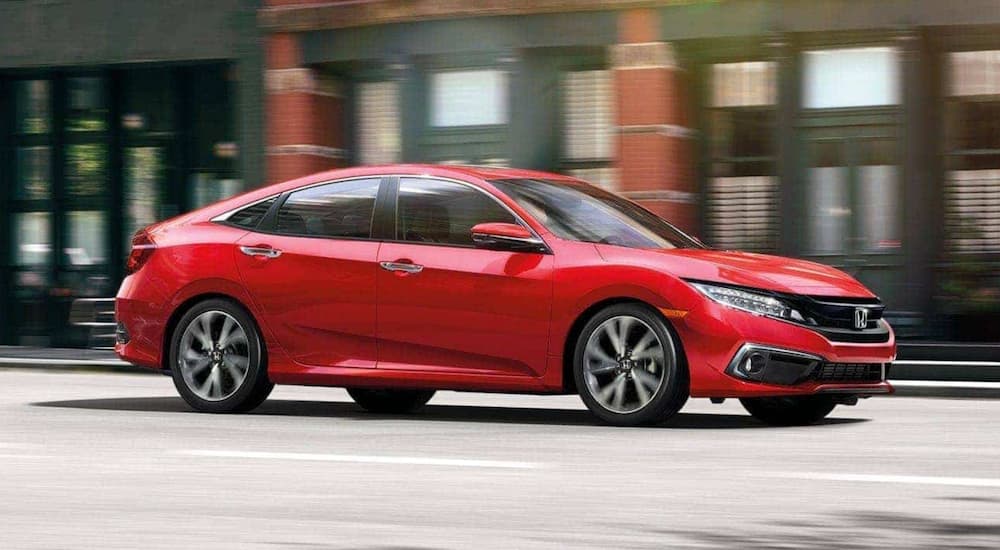For your Honda to last a long time and function at its best, regular auto maintenance is necessary. In addition to ensuring your safety while driving, maintaining your Honda provides a number of advantages. Above all, regular maintenance helps avert possible problems before they develop into serious and expensive repairs. Following the recommended maintenance for your car will help you spot and fix minor issues like dirty air filters, worn-out brakes, and low oil levels. If these issues are ignored, they can worsen and impair your car’s performance and create dangerous driving conditions.
In addition, you gain better fuel efficiency as a result of good car maintenance and increase your Honda’s lifespan, safeguarding your investment and maintaining its worth as a used car. Proper maintenance gives you confidence during the drive, knowing that your car is secure and dependable for your everyday commute or family vacations. This confidence increases even more when you work with a trusted used Honda dealer for your maintenance needs. Continue reading to learn more and to understand the importance of working with a reliable team.
Understanding Your Honda’s Maintenance Schedule
The excitement of the open road and the feeling you get from the smooth drive of your Honda are supported by following the maintenance schedule. While Honda has a solid reputation for building dependable and long-lasting automobiles, you still need to do your part. It’s essential to adhere to the manufacturer’s maintenance guidelines if you want to keep your Honda operating well. These suggestions, which are intended to ensure the longevity and safety of your car, are the result of years of research and testing.
You can access your vehicle’s maintenance schedule by reading the owner’s manual, checking with a Honda-certified mechanic, or accessing HondaLink. HondaLink is an app that provides you with many convenient features, such as service notifications and vehicle guides. Each maintenance schedule is tailored for a particular Honda model and accounts for variables, including mileage, driving conditions, and engine type. Here are some essential maintenance requirements your Honda needs to perform at its potential.

Oil Changes
Your engine’s oil is its lifeline. By changing it at the suggested intervals, you can avoid wear and tear and keep your engine operating smoothly. The make and model of your Honda, your driving style, and the kind of oil you use are some of the variables that affect how often you should replace the oil. Honda has detailed recommendations in the owner’s manual regarding the frequency of oil changes, and it is imperative that you follow these suggestions to maintain the best performance of your engine.
As far as the type of oil you use and its longevity, a general rule of thumb is that synthetic motor oil has a maximum mileage of 7,500 to 10,000 miles, depending on driving circumstances. Conventional motor oil typically needs to be changed every 3,000 to 5,000 miles. Additionally, Honda vehicles have an internal system that uses variables like engine load, temperature, and driving habits to determine when an oil change is necessary, sending an alert to your dash.
If you travel in harsh conditions often, such as extremely high or low temperatures, stop-and-go traffic, or hauling large objects, it might be necessary to change your oil more often. In extreme circumstances, the oil may degrade and become less effective, which, if left unattended, might result in engine damage.
Just as important as changing your Honda’s oil on a regular basis is using the proper type of oil. Honda advises using oil that complies with the guidelines provided in the owner’s handbook. This usually refers to an oil grade and viscosity (such as 5W-20 or 0W-20) and may also specify whether your engine is better off using conventional or synthetic oil.
Your engine’s components will be properly lubricated and protected if you use the correct oil. Inappropriate or low-quality oil consumption can result in increased engine wear, reduced fuel efficiency, and even engine damage. It’s important to remember that, in certain situations, using oil that doesn’t match Honda standards may void the warranty on your car.
Tire Maintenance
Since your tires are the only component of your car that comes into contact with the road, they are essential to your car’s safety. Maintaining your tires regularly guarantees that they will function at their best, especially when driving over rough terrain. In addition, you gain better traction, handling, and braking capabilities when your tires are maintained, which lowers your risk of an accident.
Part of tire maintenance is ensuring your tires have the proper pressure. Underinflated tires decrease your car’s fuel efficiency and raise the possibility of blowouts. Reduced grip and a rough ride are two consequences of overinflated tires. Check your pressure frequently to maintain your tire pressure at the appropriate levels specified by the manufacturer. Also, it’s important to note that temperature shifts can fluctuate your tire pressure. Be mindful of this if you wake up on a chilly winter morning to much less pressure in your tires. As you drive, the pressure should even out to the appropriate amount.
It’s important to schedule consistent tire rotations. You’ll notice that there is usually a difference in wear between the front and rear tires. Tire rotations on a regular basis guarantee that the wear on all four tires is distributed equally. By doing this, you may prolong the life of your tires and maximize your investment. Furthermore, even tire wear preserves the best handling and traction.
Along with this is the need for wheel alignment. Stable handling and avoiding early tire wear are dependent on proper wheel alignment. Wheel misalignment can result in uneven tire wear, poor handling, and inefficient fuel use. Over time, frequent alignment inspections and adjustments can reduce the cost of gasoline and tire replacements.
Tire maintenance is essential for the longevity, efficiency, and safety of your car, in addition to being convenient. In addition to helping you save money and lower your risk of an accident, routinely inspecting and maintaining the tires on your Honda can also make driving more enjoyable. It’s an investment in the long-term health of your car as well as your own road safety.

Additional Maintenance Requirements
Oil changes and tire maintenance are the two most common maintenance requirements, but they’re not the only things you need to pay attention to. The following list is also important to maintain for peak driving performance. When visiting your local Honda service center, ask them if they check for these things. You’ll find that most are assessed during your routine oil change, but it’s good to know what is and what isn’t.
Fluid Checks: To keep your Honda performing at its best, it’s critical to periodically check and replenish fluids like power steering, brake, coolant, and gearbox fluid.
Filter Replacements: The fuel, cabin, and air filters significantly impact your Honda’s efficiency. By replacing these filters as directed, an engine will run cleanly and effectively.
Brake Inspections: For your safety, as well as the protection of other drivers on the road, routine brake inspections and pad replacements, when necessary, are essential.
Other aspects to consider that might not adhere to a specific schedule are checking the health of your battery and wiper blades and your steering and suspension systems. If you have concerns or questions about any of the maintenance needs for your car, Honda-certified technicians can assist.
Advantages of Sticking to the Plan
You might wonder how important it truly is to stick to the maintenance schedule. The fact is that a well-kept Honda has several advantages, such as giving you consistent confidence on the road by lowering the chance of breakdowns. This might also lead to increased safety when you realize that accidents can be avoided when the systems in your Honda are working well. As mentioned above, you also get the best fuel efficiency when your car runs at its best. You maintain the most value and get the most out of your ownership when the maintenance schedule is maintained.
Routine Maintenance Is the Key to Honda Longevity
The secret to having a dependable and long-lasting Honda is proper maintenance. Your Honda should continue to provide a safe and pleasurable driving experience if you know what to do for routine maintenance and adhere to manufacturer guidelines. You’ll enjoy the benefits of a well-maintained car for many years if you don’t disregard the regular maintenance that keeps your Honda in excellent condition. You’ll be rewarded with miles of trouble-free open-road travel with your Honda. Stop by your local Honda service center today to see what your vehicle needs.

